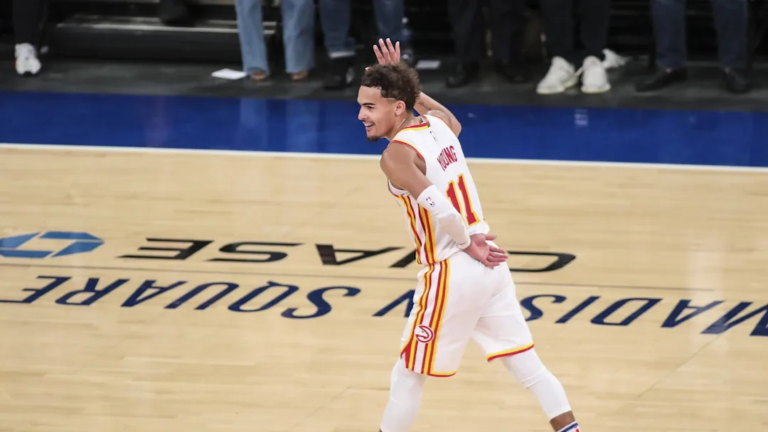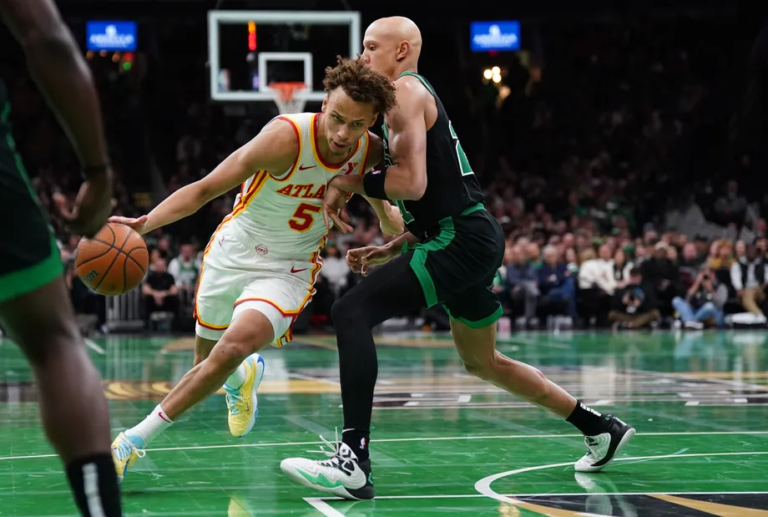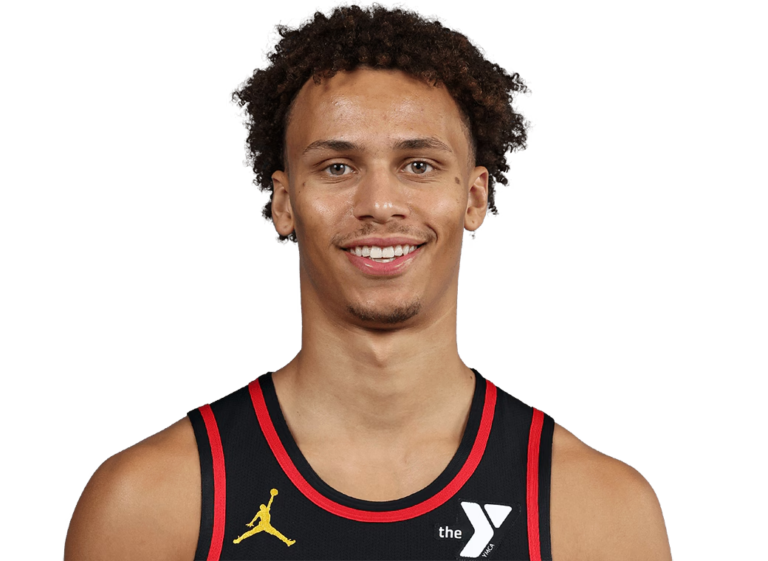
With training camp just two months away, it’s been a fairly static summer so far for the Atlanta Hawks. While the Dejounte Murray extension (4-years/$114 million) was an excellent piece of business given how much the salary cap is projected to rise over the next few seasons, the culmination of Atlanta’s off-season moves up until now hardly make this team appear any better on paper than last year’s side that finished 41-41 (10-11 under Quin Snyder). While continuity and a full off-season of development under Snyder might be enough to add a few more tallies to their regular season win total, on talent alone, you would have a hard time convincing people that this group has the chops to compete with Eastern Conference heavyweights such as Boston and Milwaukee (and potentially Miami if they ever get a Damian Lillard deal over the line!) in a seven game series.
Which brings us to our topic of discussion today: Toronto Raptors’ forward, Pascal Siakam – an NBA champion, Most Improved Player award winner and 2x All-Star who averaged 24.2 points, 7.8 rebounds, and 5.8 assists last season. Atlanta has been batting their eyes at Siakam all summer long, and have made it clear to the NBA world that he is their #1 trade target. Even though Siakam has just one-year remaining on his contract, the Hawks’ would have to part ways with some significant pieces in order to acquire him due to his $37.8 million salary for next season*. Yet, there is no denying that a player of his caliber would add some juice to the Hawks’ starting five.
*the Hawks would have to include at least two out of three of De’Andre Hunter, Clint Capela, and Bogdan Bogdanovic (eligible to be traded September 16th) in a trade for salary matching purposes, not to mention any additional prospects and draft picks Toronto may be interested in
It was reported yesterday by Shams Charania of The Athletic that trade discussions have all but ceased between Atlanta and Toronto in recent weeks*, however that same report also mentioned that Toronto and Siakam have not made any progress towards a contract extension either, leaving the door slightly ajar for a trade to go down in the coming months as Toronto is not going to want to lose their leading scorer for nothing at the end of the season if the two sides cannot reach an agreement on an extension. Atlanta remains the most interested party, and will surely be poised to strike should Siakam’s future in Toronto remain murky heading into the season.
*Per The Athletic, Atlanta is “fully prepared to ender the 2023-24 season with their current roster”
So, why are the Hawks so interested in trading for Siakam, and would his fit alongside Trae Young and Dejounte Murray be as seamless as Atlanta’s level of interest might lead you to believe? Here are some green and red flags around a potential Pascal Siakam trade for the Hawks.
Green Flags
Green Flag #1: Siakam is an Elite Playmaker
Siakam has led the Raptors in scoring in each of the four seasons since Kawhi Leonard left for Los Angeles, however he has also blossomed into one of the NBA’s best passers at the forward position – setting a career high in both assists per game and assist percentage (24.4%), as well as a career low in turnover percentage (9.6%) last season.
Siakam’s ability to initiate the offense would add another dimension to Atlanta’s offense as it would give them the playmaking ability from the high and low post positions that last year’s trio of big-men (John Collins, Clint Capela and Onyeka Okongwu) could not always be counted on to provide. While Jalen Johnson has proven to be an impressive passer and is slated for a bigger role next season, his ability to score in the halfcourt remains a work in progress and as a result will have fewer passing lanes available to him because the defense will be less willing to send help towards him.
Siakam Playmaking #1 (video)
Siakam Playmaking #2 (video)
Siakam Playmaking #3 (video)
Siakam is also extremely adept at creating out of the pick-and-roll, which would be a unique skill amongst Atlanta’s current crop of forwards and bigs, and could lead to Trae Young and Dejounte Murray being used as screeners to give Siakam a mismatch to attack and score, or draw two and find the open man.
Speaking of Atlanta’s guards, part of the reason that the team traded for Dejounte Murray prior to last season was to give them a secondary playmaking option on the floor to ease the creation burden on Trae Young. However, due to the pair’s affinity for the pick-and-roll, lack of off-ball movement and subpar perimeter shooting, their offense ended up looking awfully similar to the pick-and-roll heavy brand of basketball that they played in 2021-22 except they swapped out a catch-and-shoot threat (Kevin Huerter) for a non-catch-and-shoot threat (whichever one of Young or Murray did not have the ball in their hands), which, of course, made them easier to defend*. Young’s offensive load** in ’21-22 was 61.8% (#1 in the league) and only dropped to 60.2% (#2 in the league) in ’22-23 – which I don’t think is quite what the team envisioned after adding Murray into the fold.
*Atlanta ranked #2 in offensive rating in ’21-22, but plummeted all the way down to #15 in ’22-23 before Nate McMillan was relieved of his duties
**Like usage rate, but this metric also accounts for playmaking – #’s from BBall Index, though the offensive load metric was created by Ben Taylor of the Thinking Basketball podcast. Read more about offensive load at the link provided.
Though Young appeared to be slightly more receptive to being used off-ball after Quin Snyder took over, Siakam’s ability to create for others would give Young even more of a reason to embrace this role within the offense (similar to Stephen Curry, Jamaal Murray, or Darius Garland) as his off-ball gravity combined with Siakam and Murray’s playmaking ability would create easy looks for the rest of the players on the floor and boost the Hawks’ overall efficiency on the offensive end.
I mentioned above that Young is not a catch-and-shoot threat, and by looking at the chart below, you can see that this is not necessarily an indictment of his catch-and-shoot 3-point percentages, but more due to the fact that he hardly takes any of these types of shots in the first place.
Siakam assisted 196 three-pointers last season (13th most in the NBA, 5th most amongst non-guards), and if Young is willing to adopt more of an off-ball role, and hunt more catch-and-shoot opportunities, he could greatly benefit from Siakam’s playmaking ability. Even if he isn’t the direct recipient of a Siakam assist, if he can just draw the defense’s attention without the ball in his hands, he could open up more space for Siakam to operate, leading to more positive outcomes for the Hawks’ offense.
Green Flag #2: He Does Not Need an Invitation to Score
Siakam’s ability to put the ball in the basket is an obvious positive, but is still worth mentioning because of how he does it. For one, he has a very low assisted percentage* (40%, 3rd lowest among forwards in ’22-23 per cleaningtheglass) which shows that he isn’t reliant on a point guard to create his looks for him, and can get a bucket all by himself. This is something that cannot be said about Atlanta’s group of forwards last season, as John Collins’ inability to do so (82% assisted percentage in ’22-23) or space the floor effectively are two of the biggest (basketball-related) reasons that he is no longer on the team, while A.J. Griffin, Saddiq Bey, De’Andre Hunter, and Jalen Johnson’s assisted percentages all hovered around the 70% mark.
*the percentage of a players’ baskets that are assisted by a teammate
Additionally, Siakam gets his points in a variety of ways as evidenced by the charts below which show a breakdown of his scoring by playtype over the last two seasons.
Pascal Siakam Scoring by Playtype
As you can see, Siakam is an effective scorer in isolations, in the pick-and-roll, and out of the post, which goes hand in hand with his playmaking ability as his ability to score in these one on one scenarios forces opponents to send multiple defenders at him, inevitably opening up seams in the defense for him to exploit with his passing.
Green Flag #3: Siakam Can Handle Minutes at the 5
Siakam has also shown the capability to hold his own at the 5 for extended stretches of gametime, which would allow the Hawks to put out a small-ball lineup without getting killed on the defensive end. I like Capela and Okongwu, but the modern NBA requires teams to be versatile, and there are times when the team could really benefit from having five perimeter players on the court – particularly given Quin Snyder’s affinity for three-point shooting.
Per cleaningtheglass, Toronto posted a 117 defensive rating (37th percentile relative to other five-man lineups from that year) last season in Siakam’s 424 minutes at the 5, a 110.2 defensive rating (67th percentile) in 489 minutes in ’21-22, and a 109.8 defensive rating (75th percentile) in 361 minutes in ’20-21. While it might appear that Toronto struggled defensively when Siakam played the 5 last season, they were actually just victims of some really tough shooting luck as their opponents shot a blistering 43.7% from the three-point line against these lineups. In fact, Siakam-at-the-5 lineups last season allowed just 65% shooting at the rim – which ranked in the 68th percentile relative to other five-man lineups in ’22-23.
While it’s important to note that defensive rating is a reflection of what all five players on the court are doing on that end of the floor, and Toronto has far better perimeter defenders than Atlanta which helps prop these numbers up, it’s encouraging nonetheless to see that the Raptors’ defense does not fall of a cliff when Siakam slides up to the 5-spot like Atlanta’s did whenever John Collins manned the 5 for them over the past few seasons.
I thought it was interesting that Toronto’s offense has proven to be more potent when Siakam plays the 4 over the past few seasons*, however if the Hawks were to trade for him, his ability to hold his own defensively at the 5 would simply give Snyder another set of lineups to tinker with.
*typically, the “smaller” the lineup, the better the offense.
Red Flags
Red Flag #1: Perimeter Shooting Concerns
Perhaps my biggest concern when it comes to Siakam’s fit on the Hawks is the fact that Atlanta runs a very pick-and-roll centric offense* that relies heavily on the shooting ability of the players not involved in the P&R for spacing, and Siakam is not necessarily a high-volume three-point shooter, nor has he been a particularly effective perimeter shooter over the past three seasons. See the chart below for a snapshot of Siakam’s perimeter shooting numbers.
*Atlanta ranked #1 in the NBA in pick-and-roll frequency in 2022-23
Siakam Perimeter Shooting Chart
This Hawks team ranked 21st in three-point shooting percentage (35.2%) and 28th in three-point attempts per game (30.5) last season, and I have my concerns about adding another high usage rate player with a shaky jump-shot to the starting lineup, especially given that he has not been used as a roll-man too much over the course of his career*. How will he impact the game when one of Young or Murray has the ball in their hands? I discussed Murray and Young’s struggles to space the floor last season in the first green flag section, and unless they turn into off-ball threats, the team’s spacing could be an issue with Siakam in the fold.
*see the Siakam Scoring By Playtype chart in Green Flag section #2
Even though a Siakam trade would put three of the league’s best playmakers at their respective positions on the court together, it may also depress their collective value when they share the floor because none of them are particularly dangerous without the ball in their hands.
Red Flag #2: Would a Trade Improve Atlanta’s defense?
Another concern I have about Siakam is that his primary value comes on the offensive end of the floor, while the Hawks are a team that desperately needs help on the defensive end, having finished in the bottom-10 in defensive rating in five of the last six seasons. Atlanta finished 24th in defensive rating and 4th in offensive rating in their 21 games under Quin Snyder last season, and assuming a Siakam deal costs the team De’Andre Hunter – who has his flaws, but was the team’s best perimeter defender last season – the team’s defense would probably not improve much by slotting Siakam into the lineup.
While Siakam is a solid individual defender, using his enormous 7’3” wingspan to bother whoever he is guarding, O.G. Anunoby is the star of Toronto’s defense, and as you can see from the chart above, Siakam’s defensive on/off splits have actually been pretty neutral over the past few seasons. In Atlanta, Siakam would not be surrounded by the defensive talent that he was in Toronto as essentially every non-big man on the Hawks’ roster could be considered a liability, and I don’t see how it would be possible for him to turn this team’s defense around all by himself.
The free agent market has nearly dried up, and the team likely would not have many assets left to acquire players after a Siakam deal, meaning that their defense would probably continue to plague them without some drastic internal improvement.
Red Flag #3: This Trade Would Have to Work… Fast! (Contract Situation)
Not to be dramatic, but given Siakam’s lack of interest in continuing his career anywhere but Toronto and that he has just one year remaining on his contract, any team that trades for him would seemingly have to show serious signs of contending next season or face the risk of losing him for nothing at the end of the season. Because of this, and the fact that Masai Ujiri has proven to be a tough, borderline stubborn negotiator (see how the Kyle Lowry and Fred VanVleet trade sagas played out), the Hawks have to be extremely confident that a Siakam trade would drastically improve their title odds next season before forking over whatever the Raptors’ asking price for Siakam is.
The Raptors reportedly declined a package centered around De’Andre Hunter, A.J. Griffin and draft compensation earlier this summer*, so you’d have to assume that the Hawks would be required to top that offer in order to get a deal over the line.
*While Clint Capela wasn’t explicitly mentioned in the report, he probably would have been routed to a third team in exchange for additional salaries to make the deal work as Hunter and Griffin alone do not reach the minimum outgoing salary threshold.
The question facing Atlanta is whether or not Siakam is worth it?






